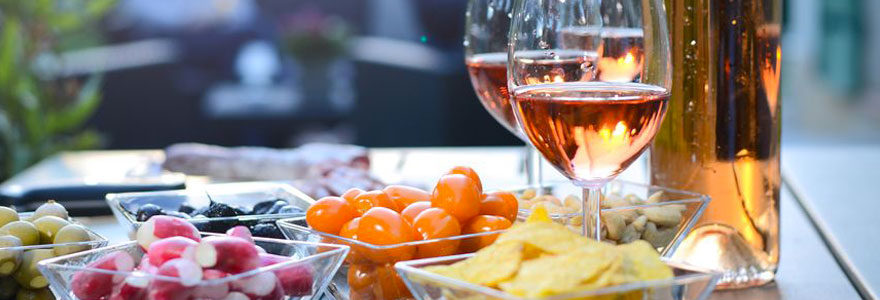An aperitif is an alcoholic drink consumed before a meal. It can also be defined legally as a wine with not less than fifteen percent alcohol. Additionally, in some cultures, an aperitif is referred to as a social event that includes cocktails, heavy appetizers, or a light meal. The role of the aperitif is to whet the appetite and prepare your taste buds for the rest of the courses. French wink site, frenchwink.com, offers some of the best aperitifs and French gourmet in NYC.
Characteristics and types of aperitif
Aperitifs are usually dry. Dryness is typically measured by the amount of perceived sugar in the beverage. Aperitifs are usually bitter as they are meant to whet the appetite and not fill up the guests. They also normally feature a low alcohol content (usually lower than 25%). This is because alcohol tends to affect a person’s appetite. This means that the more the alcohol content, the more you will lose your appetite. Since aperitifs are usually served before meals, they are in no way meant to make you lose your appetite. Aperitifs are mostly liqueurs, some forms of sherry and champagne. However, there are various types of aperitifs from different cultures around the world. The most common ones are; Pastis, Dubonnet, Lillet, Vermouth, Amari, Ouo, and Sherry, to name a few. You can visit a wink boutique or french stores NYC for ideas on some of the best aperitifs for your guests.
Why should you serve an aperitif?
One of the main purposes of serving aperitif is to make the food you have prepared more appealing. An aperitif does this by opening up the palate. Therefore, aperitifs are usually light and crisp, so they do not overwhelm the palate.
How to serve an aperitif
Before getting into the hows of serving aperitifs, the first thing you must do is understand the right time to serve it. The best time to serve an aperitif is when your guests arrive. This time frame allows your guests to enjoy their beverage unrushed and socialize before a meal. When serving the drink, it would be wise to serve the drink at an appropriate temperature. Note that champagnes and white wines are best served when well-chilled. This allows them to stay cool even if they are consumed slowly. On the other hand, red wines and liqueurs are best served at room temperature. This temperature enhances their taste. Some aperitifs may need to be served with water. You can always seek advice from a wink store or wink boutique on such aperitifs and how much water to add. It would help if you also served the aperitif in small portions. This will allow your guests not to indulge too much before having the meal.You may also want to serve the aperitif with small tasty bites of light crackers and olives. Doing this will prevent the aperitif from affecting your guests too quickly. It will also keep them from filling up before the meal is served. You may also want to select an aperitif glass depending on the type of aperitif you choose. For instance, champagnes and martinis have specific glass styles. You may also want to match the aperitif with meals as you pair your wines and entrees. However, note that this is not a must. Regardless, you can still choose an aperitif that will not overflow into the main course or one that will aid your guest’s digestion. It would also be wise to choose an aperitif that will not overwhelm the wine and the food to be served later. Now that you understand the why and hows of serving an aperitif, you may want to visit the wink store or the best French stores NYC to check out some
